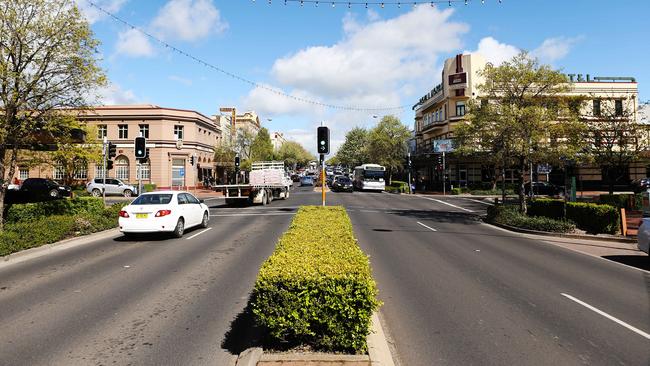Build jobs, millennials will come
Boomers are too young to downsize, but a different opportunity awaits millennials who are clever enough to spot it.

Australia is looking back on decades of fruitless attempts to decentralise its population. All parties and levels of government long loved the idea of regional growth, but growth remained concentrated in big cities. The past decade, for example, started with 70 per cent of Australians living in major cities and ended with more than 72 per cent of the population concentrated in the major urban centres.
Why don’t Aussies move to the regional cities? Why do we all cram into the same few cities? Jobs. In the end, it all comes down to jobs. Population follows employment. Since the 1970s the Australian economy has shifted away from jobs in agriculture and manufacturing to knowledge jobs. These new knowledge jobs love to cluster in inner-city office towers.
If the economy has less need for jobs in agriculture (because of mechanisation and farm aggregation) and manufacturing (because of cheaper labour overseas) but demands more knowledge jobs, declining regions and growing cities are the logical consequence.
There are two related challenges in growing the regions. The first one is to create jobs. This can be done by relocating government departments, opening regional branches and offering tax incentives for new businesses, among other options. The second challenge is to convince people to remain in or move to a regional city.
For today’s column let’s worry only about the second challenge. We will explore the housing needs of each generation across the next 10 years. Who is most likely to move to the regions in the 2020s?
The pre-boomers (born before 1945) will be focused on health in the 2020s; maintaining an independent lifestyle is most important to them. A regional city with good healthcare facilities will be able to retain most of its pre-boomer residents and even might attract elderly residents from surrounding small settlements with inferior health infrastructure.
Some regional cities will successfully position themselves as lifestyle destinations and can attract pre-boomer downshifters from the big cities.
The 2020s will see the last baby boomer (born 1946 to 1963) reach retirement age. Boomers are too young to downsize at scale just yet.
Across the next decade they will enjoy their first years of retirement and most will stay in their current family home. The baby-boomer downsizing movement kicks into gear in the 2030s. Boomers will largely stay put during the 2020s.
The growth of the regions doesn’t depend on the boomers and it doesn’t depend on Gen X either. Xers (born 1964 to 1981) will also stay put during the 2020s because their kids (Gen Z) are still of school age and the mortgage still needs to be paid off. Uprooting the family and moving to a regional city won’t be a path for many of them. Regional Gen X parents, like other regional parents before them, will see their 18-year-olds leave to be educated in a big city.
These kids belong to Gen Z (born 2000 to 2017). Strengthening of regional TAFEs (including the abolition of fees) will help to soften the exodus. Strengthening regional TAFE institutions is a realistic goal and should be prioritised by all levels of government and all parties.
The best way to keep Gen Z in the regions would be to strengthen regional universities. This is a very hard task. The big for-profit universities have little to no incentive to establish sizeable regional presences. Gen Z will have to flee the regions for university education. Regions with good job opportunities can hope to lure Gen Z back home once they graduate in their mid-20s, rather than in their late 30s and 40s as is currently the case.
This leaves the future of the regions during the 2020s firmly in the hands of the millennials (also called Gen Y, born 1982 to 1999). Why would regional Australia be an attractive option for a generation that has become accustomed to inner-city life? In the next 10 years millennials, by far the largest generation in Australia during the 2020s, will be starting families. They will reassess their lifestyle preferences, and the big-city lights aren’t that alluring any more.
Millennials’ biggest challenge will be to find three or four-bedroom homes in which to rear their families. Such properties are unaffordable for many in the major cities but easily affordable in the regions. Since the government is likely to invest in infrastructure to improve the connectivity between the major regional cities and the capital cities, a regional move feels less isolating. Improved connectivity allows millennials to live in the regions, work from home and occasionally commute to the capital cities.
Many millennials have been disillusioned by their big-city experience, as they were the first to lose jobs because of the COVID-19 pandemic, when cafes and retailers shut down, and when they lost their office jobs because of first-in, first-out practices. These frustrated millennials may be enticed through targeted marketing to consider a move to the regions. Time to change up your life, pack your bags, start anew. This is a matter of storytelling (and of course regional job availability).
Throughout the 2020s any growth-minded regional city or local government area must aim to improve local access to higher education (especially TAFE) to retain their Gen Z population. The regions must tell a compelling story of affordable housing, top schools, and general quality of life. Regional towns must be loud and proud in announcing their attractions. This requires an all-of-community effort. Local schools, TAFE (and maybe even local universities), business owners, councils, Rotary clubs, sports teams and other community organisations must work together to come up with a plan to reach out to potential future millennial residents.
Right now, many regional cities stand a once-in-every-few-decades opportunity to attract new population at scale.
Demographer Simon Kuestenmacher is co-founder of The Demographics Group.

